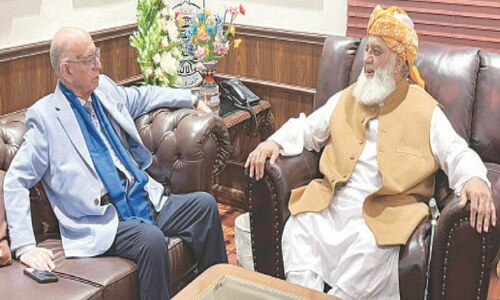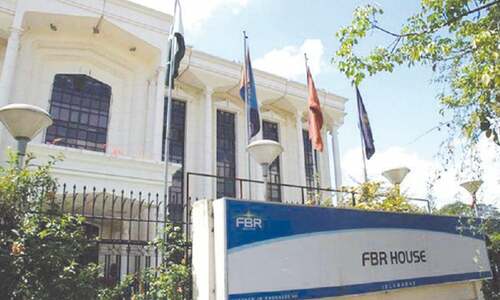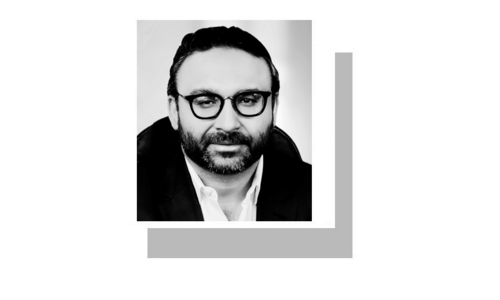 ISLAMABAD, Aug 6: After showing in the US, “Unseen Visions: Contemporary Painting in Pakistan” returned to Pakistan and is now displaying at Gallery 6, which opened its doors for public viewing here on Wednesday.
ISLAMABAD, Aug 6: After showing in the US, “Unseen Visions: Contemporary Painting in Pakistan” returned to Pakistan and is now displaying at Gallery 6, which opened its doors for public viewing here on Wednesday.
The exhibition was earlier held at the East-West Center Gallery in Honolulu, Hawaii, USA, from April to June.
The show was organised by Dr Arjumand Faisal who is the president of East-West Centre Association, Islamabad chapter.
The 12 painters were selected for the featured exhibition after reviewing works of 25 contemporary artists who demonstrated creativity, diversity, and vitality of contemporary Pakistan. The exhibition was very well received by people and the media. The collection now on display for art lovers as “Ambassadors of Pakistan”, since the artists had aptly played that role, emphasizes contemporary issues among artists and contextualises works in relationship to traditional themes and motifs.
Contemporary artwork in Pakistan deals in multiple spheres, often using historical and cultural references. Artists are not only discovering new horizons in aesthetics but overtly displaying both a reaction and response to political issues, social problems, human rights and international injustices.
While some artists have focused on social issues such as women’s status, sexuality, environment, poverty, and hunger, others focused on issues of spirituality, aesthetics, and the natural world.
Interestingly, it is through depiction of human body that so many issues are being presented. Artists used the image of the human form as a statement that has strong social content.
Sana Arjumand, using the icons of the Pakistani flag – the crescent and star – has raised issues about the conflicts and identity of Pakistani youth of her social class.
Ali Kazim deals subtly with narratives of sexual orientation among men. His work is also about the male body, its intimacy, and social and ethnic values associated with being a man.
Akram Dost employs local cultural motifs to highlight apathy of women of his province, to underscore their suffocation, powerlessness, and suppression, which is in conflict with their internal desires.
On the other hand Abrar Ahmad’s paintings on women are works of romance and beauty. The images hearken to earlier traditional miniatures with faces that are highly stylized – images of women with elongated necks, expressive eyes and eloquent hands.
While not necessarily referring to any specific religious tradition, calm spirituality in the face of a world of turmoil and sorrow is depicted by some of artists in this exhibition.
Genderless bald figures stand silently in serene environments among symbols of various religions in R.M. Naeem’s works. The images emphasise love, peace and harmony and their presentation reflects how all religions impart the message of peace.
Mehr Afroze’s Poshak series focuses on impact of the dress on self and others, and discusses significance of internal spiritual attainment in contrast to external decoration of one’s self.
Through his distinctive images Mudassar Manzoor attempts to depict aspects of metaphysics and consciousness, the phenomenon of being. In contrast, Masood A. Khan paints the city and rural life in a transparent manner.
While some of these artists create an imagined spiritual landscape, others paint from images in the material world.
Artists continue to try to capture the magnificence and beauty of landscape, even though there continues to become overdeveloped and overpopulated in the country’s teeming cities.
The beauty of the majestic mountains, lush green fields, river scenes, and the vibrant rural countryside are well captured in landscapes by Ghulam Rasool and Mughees Riaz.
As local contemporary artists continue to explore pictorial beauty of calligraphy and transformed it into modern painting, Ahmed Khan uses silver paper pasted on wooden board and oxidizes it with chemicals to produce base colours and textures. The product is then converted into painting by using different pigments and colours to write Quranic verses.
In contrast, Rashid Arshed, a contemporary calligraphist utilising calligraphy consistently since the 1960s, does not use words or phrases that are readable or have literal relevance. The presence of such elements (letters from Urdu script) is for the purpose of visual synthesis rather than literal meaning.










































Dear visitor, the comments section is undergoing an overhaul and will return soon.